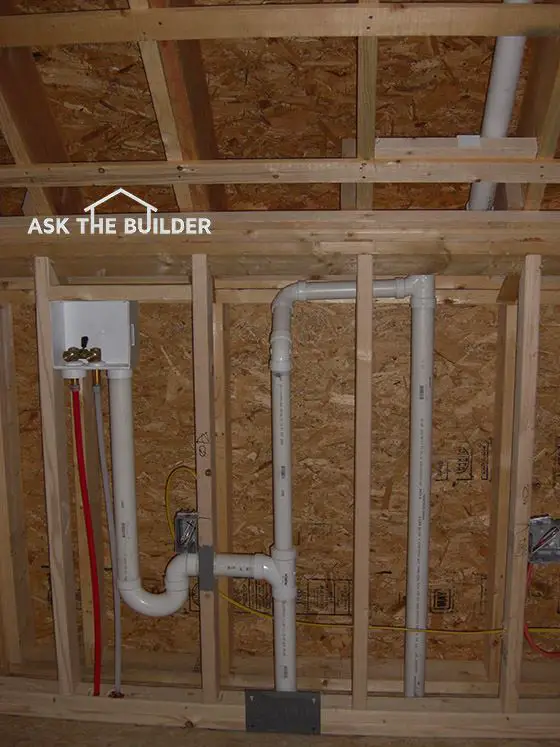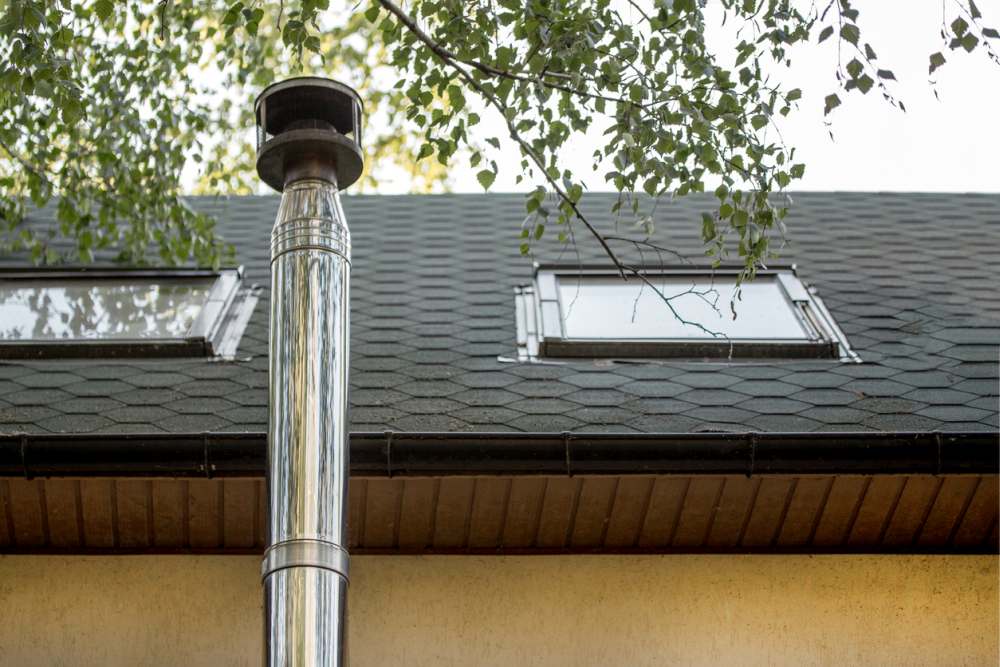Achieving Proper Ventilation in Your Plumbing System: How
Achieving Proper Ventilation in Your Plumbing System: How
Blog Article
We've found the article on What Is A Plumbing Vent & How Do They Work? directly below on the internet and concluded it made sense to write about it with you on this page.

Proper ventilation in pipes systems is typically overlooked, yet it is vital for preserving the functionality and safety of your home's pipes. Air flow assists control air pressure, prevent the buildup of damaging gases, and guarantee the reliable elimination of waste. In this overview, we will discover the importance of proper plumbing ventilation, just how it works, and the advantages it offers your pipes system.
Comprehending Ventilation in Pipes
Ventilation in plumbing refers to the network of pipelines that allow air to stream through the drain system. These vents offer numerous purposes, consisting of regulating air pressure within the pipes, preventing drain gases from getting in the home, and assisting in the smooth flow of wastewater.
Just How Ventilation Functions in Pipes Systems
Atmospheric Pressure Regulation
Correct ventilation keeps balanced air pressure within the plumbing system. When water streams via pipelines, it displaces air. Without sufficient ventilation, this variation can create unfavorable stress, resulting in reduce drains pipes or siphoning of water from catches, which can trigger undesirable odors to permeate right into the home.
Stopping Sewage System Gas Build-up
Among one of the most vital features of pipes vents is to stop sewage system gases, such as methane and hydrogen sulfide, from collecting within the home. These gases can posture serious health threats and are extremely flammable. Vent pipelines allow these gases to run away securely outside.
Helping in Waste Removal
Ventilation helps in the effective elimination of wastewater by stopping airlocks in the drainage system. When air can move openly via the vents, it enables water and waste to stream smoothly through the pipelines, minimizing the danger of blockages and back-ups.
Types of Plumbing Vents
Main Stack Vent
The primary stack air vent, likewise referred to as the vent stack, is the key vent in a plumbing system. It expands from the primary drainpipe align with the roofing, enabling gases to leave and fresh air to get in the system.
Branch Vent
Branch vents attach to the major pile air vent and offer specific fixtures, such as sinks, toilets, and showers. These vents guarantee that each component has ample air flow to operate effectively.
Air Admission Shutoff (AAV).
An Air Admittance Shutoff (AAV) is a one-way valve that enables air to enter the pipes system without the need for a typical vent pipe extending through the roofing. AAVs are frequently utilized in renovations or locations where mounting a common vent is not practical.
Signs of Poor Air Flow in Pipes.
Slow Draining Fixtures.
If your sinks, tubs, or toilets are draining pipes gradually, it could be an indicator of bad ventilation. Poor air flow can develop a vacuum cleaner effect, making it tough for water to drain effectively.
Gurgling Seems.
Gurgling audios coming from drains pipes are typically an outcome of air being sucked via water traps because of negative pressure in the pipes. This is a clear indicator of inadequate ventilation.
Unpleasant Smells.
Drain smells inside your home are a warning that your plumbing system is not appropriately ventilated. This can imply that sewer gases are not being sufficiently vented outside, leading to possibly harmful problems.
Typical Air Flow Mistakes.
Inadequate Vent Sizing.
Using undersized vent pipes can lead to poor air flow and pressure imbalances in the system. It's essential to make use of vents that satisfy the particular needs of your plumbing system.
Improper Vent Placement.
Putting vents as well far from the fixtures they serve can lower their performance. Correct positioning guarantees that air can move easily and effectively through the system.
Ignoring Code Needs.
Building regulations provide certain guidelines for pipes ventilation. Neglecting these codes can lead to a system that fails to operate appropriately and may result in pricey repair work or health hazards.
Benefits of Proper Ventilation.
Improved System Performance.
Effectively ventilated plumbing systems operate much more effectively, with less blockages, faster draining pipes, and much less stress on the pipelines. This efficiency expands the life-span of the pipes system.
Improved Air Quality.
By protecting against sewer gases from entering your home, appropriate ventilation contributes to far better interior air high quality, making your living environment healthier and extra comfy.
Stopping Water Damages.
Sufficient ventilation helps avoid water from being siphoned out of catches, which can lead to sewage system gases going into the home and triggering water damages gradually.
Actions to Make Certain Proper Air Flow.
Consulting Pipes Codes.
Always seek advice from neighborhood plumbing codes when making or customizing your pipes system. These codes give the essential standards for proper venting and guarantee your system meets safety and security standards.
Routine Evaluation and Maintenance.
Routine evaluations can assist recognize potential air flow problems prior to they become major problems. Maintenance jobs, such as cleaning up air vent pipes and checking for obstructions, are vital for maintaining the system in good working order.
Specialist Setup.
For new installments or major adjustments, it's a good idea to work with an expert plumbing. They have the proficiency to make sure the air flow system is properly designed and mounted according to code.
Final thought.
Appropriate ventilation is an important component of any kind of plumbing system, making certain that it operates efficiently and securely. By comprehending the importance of air flow, acknowledging the indicators of bad air flow, and taking steps to keep your system, you can stop pricey concerns and secure your home's air top quality.
4 Things You Should Know About Your Plumbing Vents
What Plumbing Vents Are
Also called a vent stack, a plumbing vent is a vertical pipe attached to your drain line that runs through your roof. The plumbing vent pipe, or plumbing air vent, removes gas and odors from your plumbing system and allows fresh air to enter the pipes, helping the water to flow out of the drain pipes.
What Plumbing Vents Do
Plumbing vents have two basic functions. One of which is to allow unpleasant smelling wastewater and sewer gasses to escape your plumbing system instead of entering your home. Plumbing vent pipes are typically located on roofs, away from windows, to ensure the fumes exit the home completely.
The other function of the plumbing vent is to move fresh air into your plumbing system. This helps move water through every plumbing fixture in your house, like toilets and sink drains. Think of the way in which you need to let a little air into the bottle as you pour soda in order to make the drink flow smoothly.
Different Types of Plumbing Vents
True vent: This is the most common vent option. In simplest terms, a true vent is a vertical pipe attached to your drain line that exits through the roof. They often function as the main vent that other fixtures can connect to. Re-vent pipe or auxiliary vent: Attached to the drain line near specific plumbing fixtures, re-vent pipes run up and over to connect to the main vent. Common vent: Two plumbing fixtures installed on opposite sides of a wall are typically tied into the vent stack using something known as a sanitary cross. Wet vent: This venting option operates as a drain pipe and a vent at the same time. Wet vent drainage systems drain water from one fixture while venting the air from another. Although they’ve been used for over 100 years, wet vent systems have only recently been added to the plumbing code in many areas. If you’re planning on installing one in a bathroom remodel, make sure you check your local code prior to construction. Loop vent: For free-standing fixtures like kitchen island sinks, loop vents are ideal. These vent pipes run under the floor, rise from the P-trap, and create a loop inside the cabinet sink. Air admittance valve: An AAV is a one-way mechanical valve typically installed at the site of the plumbing fixture. AAVs allow venting to occur without having to tie into a larger venting system. They’re ideal for venting fixtures where you aren’t able to easily connect to an existing vent system. Common Plumbing Vent Issues
Although vent pipes typically don’t have water flowing through them, they’re still subject to many typical plumbing issues. For example, clogs are one of the most common problems associated with sewer vent pipes. If your vent pipe gets clogged, all of your plumbing fixtures tied into the vent stack will be affected.
A sink with a slow drain that bubbles and gurgles or a strong sewage smell around your toilet are both indicators that your toilet vent pipe is clogged. Because most vent pipes exit through the roof, old leaves, twigs or even a bird’s nest could be clogging the pipe.
Clogs in your vent pipe system cause a buildup of negative pressure, meaning that water won’t be able to flow out of your home very well. It’s similar to putting your finger over the opening of a straw to trap water inside. When you remove your finger, the water is able to flow out of the straw.
If you suspect you have any blockage in your vent, make sure you have a professional come examine the situation. Left unchecked, a blocked air vent can lead to other costly repairs, like leaks and sediment buildup.
Under Pressure
Pipe vents are essential aspects of a home’s plumbing system. Owning a home means learning about all sorts of things you never put much thought into before. But by understanding as much as you can about the important systems of your home, you can keep those budgets intact and those anxiety levels low.
https://www.homeserve.com/en-us/blog/home-improvement/plumbing-vents/

I was shown that article on Why Plumbing Air Vents Are Important through an acquaintance on another web address. Are you aware of someone else who is truly interested in the subject? Why not promote it. I treasure your readership.
Visit Page Report this page